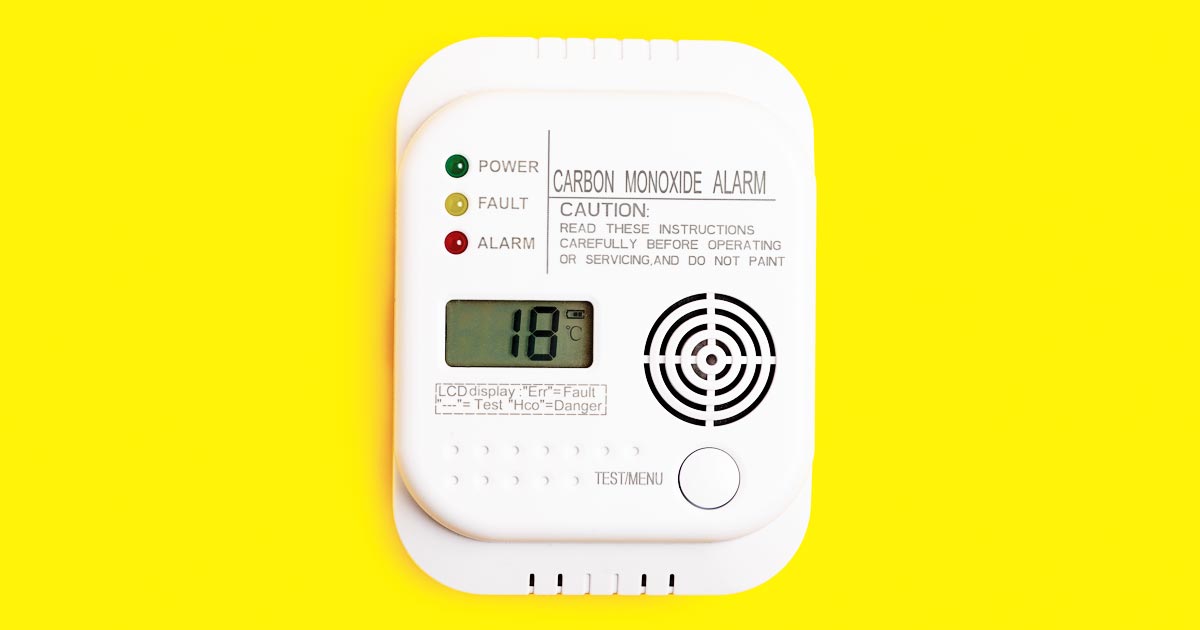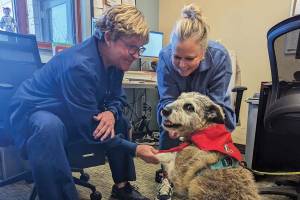A chain of events led to a family from southern Montana coming close to dying after enjoying the warmth of their fireplace one evening last fall.
That next morning the father left for work. The two preschoolers and two teenagers were at home with their mother. The first hint that something was terribly wrong was when everyone became progressively ill during the morning—with lethargy, severe headaches, loss of balance, and dizziness. Because they were so sick, the mother called her sister, who was a medical doctor. She could have easily assumed her relatives had COVID, but, since the entire family had become ill all at once, the doctor thought they might be suffering from carbon monoxide (CO) poisoning.
To be certain, she sent someone with a carbon monoxide detector out to the family’s home. At first the detector didn’t react, but within a half hour, its alarm sounded. That’s when the family got out of the house and into fresh air.
The event didn’t end there and then, however. The doctor knew her relatives had CO poisoning in their blood. She knew CO binds with red blood cells and moves throughout the body, possibly causing major organs to start shutting down, which could result in death. The whole family was rushed to the hospital emergency room.
The test for CO poisoning measures a patient’s carboxyhemoglobin (COHb) level. The family tested at various levels, with the mother in critical condition. All family members needed to be placed in a hyperbaric chamber to speed the replacement of carbon monoxide with oxygen in their blood. The emergency room had only two glass-encased chambers built for adults. Because the staff had never used them with children, they consulted with the trauma center in Salt Lake City for the care they needed.
For six hours each, family members took a turn in the hyperbaric chambers. That night the mother moved to the Intensive Care Unit, and the father stayed with the two small children in a regular hospital room. The teenagers, who had been less exposure because they slept in a bedroom with the window open, stayed with relatives.
Further investigation revealed the furnace vent was partially clogged, so it was cleaned and CO detectors installed. The family was able to return home the next day.
Understand CO Poisoning Sources
Normally furnaces start kicking on as fall weather cools down, keeping the exhaust vent warm and open. Heating the house temporarily with a fire in the fireplace can cause problems. While a fire sends out heat, the vent to the furnace can become cool.
Cold air, heavier than warm air, can then drift down into a partially clogged vent and prevent any warm air from escaping when the furnace kicks on in the middle of the night. When it does kick on, warm exhaust containing carbon monoxide has to go somewhere, so it can drift out throughout the house for residents to breathe. Carbon Monoxide is odorless, colorless, and tasteless, so it’s impossible to detect it in the air.
But using a fireplace instead of the furnace for heat doesn’t necessarily result in CO poisoning. Conditions must be just right—when the vent pipe is clogged or has condensation, or when cold air has sealed off the vent. Usually, with regard to fireplaces, the cause is a poorly vented chimney.
New or newly remodeled homes may also be problematic when they are air tight, having little or no “make up air” coming from the outside to circulate and force the furnace exhaust through the vent pipe. Occupants find out about this type of problem when a CO detector sets off an alarm. In such instances, a vent connecting the outside to the furnace room needs to be installed.
Running generators or unvented stoves or leaving a car engine running for a length of time in an attached garage, even with the garage door open, may also result in dangerous CO levels within the home.
Check for Vent Failure
Natural draft vent systems operate with extremely small pressure differences, which can easily be overcome and result in vent failure. Be sure to follow any manufacture guidelines for ventilating gas appliances, and schedule annual maintenance checkups for your appliances. Make sure your contractors test for draft and combustion.
Exposed? Get Checked!
Individuals exposed to CO should immediately go to the emergency room at the nearest hospital for testing and, if needed, decompression.
Every year 50,000 Americans visit emergency rooms, and close to 500 die from CO poisoning.
“It is important that people know to go to a safe place and call 911 if their CO detector sounds an alarm, ” said Tyler Muzzana, Operations Manager and Director of Engineering at Energy West in Great Falls, Montana. “If an individual is installing a gas appliance, it is important to follow the latest International Fuel Gas Codes and have a certified plumber check the installation, to ensure it meets the correct safety standards. Like all gas companies, our primary goal is that our customers are safe.”
Install CO Detectors
Because the only way to detect CO is with a detector, every home needs at least one, but it is better to have one in each bedroom. Follow instructions carefully for installation, and keep the batteries up to date.
CO detectors are crucial. They are important safeguards against CO poisoning, and they can save lives. MSN










